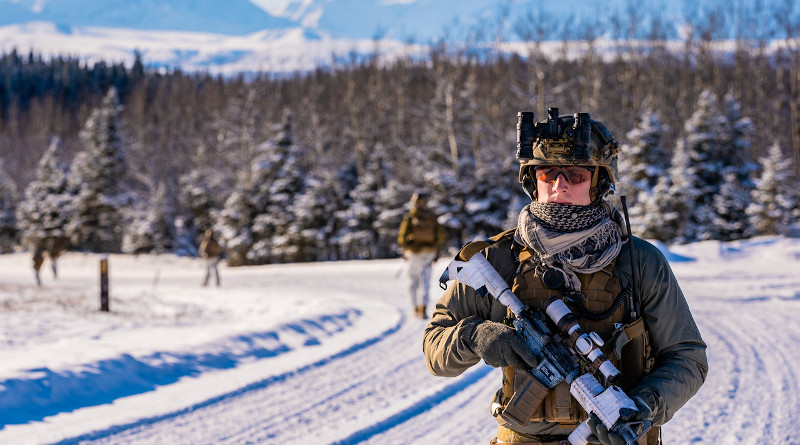China, A Non-Arctic Nation, Meddling In Arctic, Says DOD Official
By DoD News
By David Vergun
U.S. competition with Russia and China is manifesting itself globally, including in the Arctic, said a Defense Department official.
Dr. James H. Anderson, performing the duties of deputy undersecretary of defense for policy, and Air Force Gen. Terrence J. O’Shaughnessy, commander, U.S. Northern Command and North American Aerospace Defense Command, provided testimony on U.S. policy and posture in support of Arctic readiness at a Senate Armed Services Committee hearing.
The 2019 DOD Arctic Strategy is anchored in the priorities of the National Defense Strategy and frames the Arctic in a whole of government approach, as well as working with allies and partners, Anderson said.
”The department’s end-state for the Arctic is a secure and stable region where U.S. interests are safeguarded, the U.S. homeland is defended and nations work cooperatively to address shared challenges,” he said.
”The immediate prospect for conflict in the Arctic remains low,” he added.
But the department is monitoring that area should a threat emerge, he said.
Anderson defined the Arctic nations as the U.S., Canada, Denmark, Finland, Iceland, Norway, Russia and Sweden.
China, which claims to be a ”near-Arctic nation,” is not, he added.
Both China and Russia are increasingly active in the region. Russia is making military investments in the Arctic, while China seeks a role in Arctic governance, despite not having territorial claims in the region, Anderson said.
The risk is that China may increase the predatory behavior in the Arctic that it has exhibited in other regions, he said.
O’Shaughnessy said the Arctic is a particularly important region when it comes to defending the U.S. homeland.
However, ”the Arctic is no longer a fortress wall and the Arctic Ocean is no longer a protective moat,” he said. ”They are now avenues of approach to the homeland.”
To deter, protect and defeat threats against the homeland, the department’s approach is to use a layered defense infused with the latest technology, he told lawmakers.
The layered defense includes situational awareness using sensors which can detect threats from the point of origin, be they on land, on sea, below the sea and in space, he said, ”long before they approach our sovereign territory.”
The other aspect to defense is to develop advanced offensive and defensive weapons, he said.
O’Shaughnessy also emphasized the importance of working with allies and partners, particularly those with Arctic nations.

